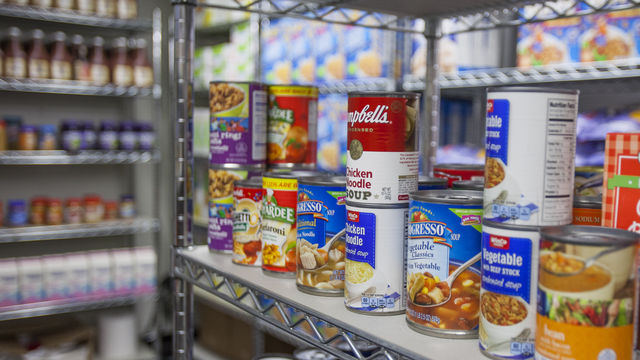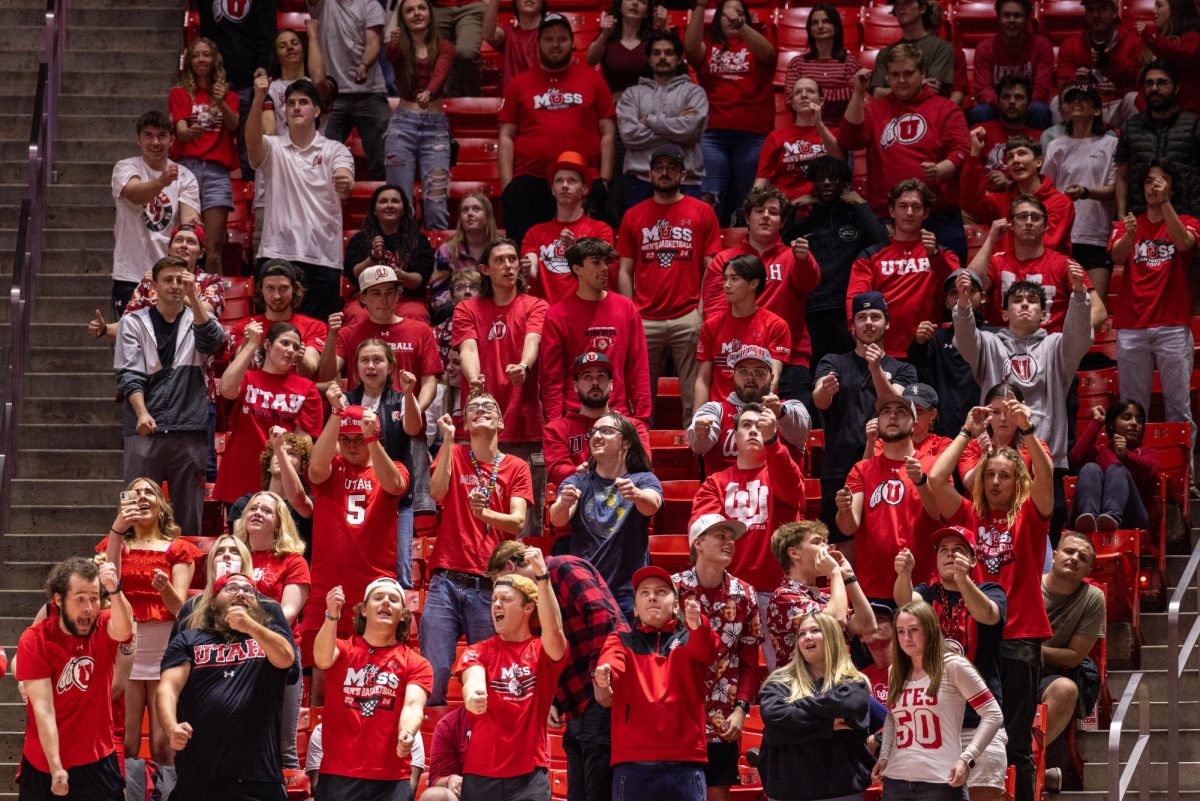Feeding Utah During a Pandemic
April 6, 2020
The Salt Lake County Health Department has deemed food pantries to be essential businesses. Essential businesses are supposed to remain open, but are “required to exclude employees with fever, cough, or shortness of breath, and should practice six feet of social distancing as much as possible”.
Most individual buildings at the University of Utah have decided to close due to the virus. While the Union closed after a building occupant contracted coronavirus, the Feed U Pantry, which is located in the Union, is doing their best to remain open in any way they can.
Donations and Need
Although Salt Lake City has experienced closures of many downtown businesses, some food pantries remain open. They are deemed essential — and the demand for this service has increased significantly since the first confirmed case of coronavirus in Utah. This trend will likely continue as the country faces high unemployment and unprecedented economic collapse.
“We have had two to three times more people coming to each location that we are at to provide food. We are seeing a huge jump in the need,” said Ginette Bott, President and CEO of the Utah Food Bank, a food pantry with emergency assistance programming aimed at fighting hunger across the state.
Some attribute the increased demand for food from pantries on the impact that COVID-19 has had on small businesses.
“75% of businesses are experiencing a downturn financial-wise, with furloughs, layoffs and all of those issues. So we are getting a large number of people who have never been here coming to the pantry for help,” said Pastor Joe Vazquez, co-executive director of Salt Lake City Mission, an inner-city church rescue mission who creates outreach programs to help the homeless and working poor in the Salt Lake area.
While the demand for food pantries is increasing, the actual amount of donations they are receiving is decreasing.
“This last Friday — we’ve been monitoring daily — we are down over 30% in our donations. We are up 50% in people applying,” Vazquez said.
With donations coming in less frequently, these food pantries have found other ways to keep their shelves stocked.
“This last week has been totally amazing — food companies like Nicholas and Company, Nickey’s Food Surplus Warehouse and our local food bank. We have communicated with anybody who has supplies that people would normally pick up but they’re not because of the current situation, that if they call us, we’ll pick it up. We have received well over three semi loads in the last week,” Vazquez said.
Along with food donations, some pantries have expressed their appreciation for the monetary contributions they have received to keep their organizations functioning.
“Thankfully, ASUU has worked with their budget and funding, as well as the overall U’s funding, and granted us a $10,000 emergency fund, which we’ve been using quite a bit to make deliveries from Costco and Smith’s to keep our shelves stocked,” said Ben Chenot, the director of the Feed U Pantry and a sophomore majoring in biology and minoring in nutrition at the U.
Changing Policies
Due to COVID-19 and the various requests at each governmental level, food pantries have had to change many aspects of how they operate. From their volunteer policies to their team projects, new practices are being put into effect to limit the spread of the virus.
“The challenge for us is when we would have a group come in to help us with a project — perhaps go through boxes — we normally would have 25 people in a room with staff. Now, we have six volunteers and a staff member. It takes two to three times longer to complete the project, but it’s in a safe environment, and we need to do that,” Bott said.
The Utah Food Bank also used to repackage food, in an effort to create more opportunity for the most amount of people to be helped. Due to the virus, they have decided to end all repackaging.
“We’ve discontinued any projects that we used to do where we would do repacking. We would take, for example, an 80-pound bag of rice, and we would repackage it into family size servings. We discontinued that. We are not doing any of those open-air preparation steps that we used to. Everything is remaining in its packages,” Bott said.
New Structures
For the food pantries that remain open, many of their hours have changed in an effort to limit the amount of human contact on any given day.
“We are normally open six days a week and we’ve gone to three days a week,” Vasquez said.
Food pantries have also adopted some sort of curbside pickup so that human contact is limited.
“All of our distribution spots all are being done with people staying in their car, with volunteers having six to 10 feet between each of them for the tasks they have to do,” Bott said.
It is clear that throughout all of the changing circumstances that the virus has created, food pantries continue to think about the people in need.
“We are trying to stay open, keep people safe as much as possible, weather this out, we are doing social distancing [and] asking people to stay separated. We’re keeping folks out in the parking lot, they are driving up in their vehicle and we are putting boxes in their trunk,” Vasquez said.
Help and Hope
Utah Food Bank and Salt Lake Mission both expressed the need to support local charities, especially during times like these.
“If you’re willing to donate money, we would ask you to remember that we’re trying to feed the entire state of Utah, so any help that comes in our direction is truly appreciated,” Bott said.
With so much emphasis on this global crisis, it may be easy to forget about the local crises that require help from community members.
“Last year we helped over 54,000 people in the Salt Lake area. All of that was done with private contributions. The nation needs their charities to be supported in general. Local is awesome. I believe in doing world outreaches, but we have plenty going on here in the United States,” Vasquez said.
Both food pantries emphasized that they are hopeful in the resilience of the inhabitants of the Salt Lake area, and the need for a united community.
“The government is not going to solve this. It’s everybody working together, the communities working together, that we’re going to get to the other side of this,” Vasquez said.
Due to the constantly changing issue of COVID-19, policies of each pantry may have changed since this article was written. For current information, visit Feed U Pantry, Utah Food Bank or Salt Lake City Mission.
k.silverstein@dailyutahchronicle.com
Editor’s note: Signs and symptoms of COVID-19 include fever, dry cough, tiredness and shortness of breath. These symptoms are believed to occur between two and 14 days after a person is exposed to the disease. If you have these symptoms and have recently come into contact with a person who is known to have COVID-19, or if you have recently traveled to an area with community spread of the disease, you should call your doctor. Areas with community spread of COVID-19 are believed to include China, South Korea, Italy, Iran and Seattle. If you do not have a doctor who you visit regularly, please call the Utah Coronavirus Information Line at 1-800-456-7707 or the University of Utah Health hotline at 801-587-0712. Do not go to a healthcare facility without first making arrangements to do so.













Zoë B • Apr 7, 2020 at 9:44 pm
This article was extremely well written and is very important!! I felt the author articulately the problem well and used clear and concise language to explain the food situation at the different locations. Very well done.